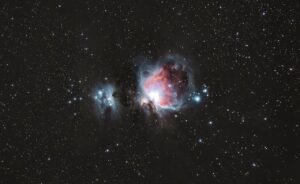A new study proposes a fascinating theory that a planet-sized interstellar object may have passed through our Solar System billions of years ago, potentially reshaping the orbits of Jupiter, Saturn, Uranus, and Neptune. This cosmic visitor, possibly a brown dwarf, could have permanently impacted the paths of these outer planets, providing a possible explanation for why their orbits are tilted and not perfectly circular.

The Mystery Behind Planetary Orbits
For decades, scientists have been puzzled by the unique orbits of the outer planets. While most models predict that planetary orbits should be circular and aligned, the orbits of the gas giants deviate from this expectation. These slight irregularities, particularly among Jupiter, Saturn, Uranus, and Neptune, have sparked questions about their origin.
Earlier research focused on the interactions between the planets themselves as a potential cause for these orbital variations. However, this theory did not entirely explain the observed discrepancies, leaving room for further exploration into the true cause of these planetary path anomalies.
The Role of Interstellar Objects
The latest study suggests that the cause of these orbital quirks may lie in the passage of a massive, planet-sized object through our Solar System long ago. The object, believed to be a brown dwarf or a similar substellar body, could have influenced the orbits of the outer planets in profound ways. These interactions could have led to the tilting and eccentricity of their orbits, explaining why the outer planets don’t follow the expected circular paths.
The research also proposes that such cosmic visitors might not be as rare as previously thought. In fact, objects like these could frequently pass through our Solar System, offering a new perspective on how the planets were shaped and how they evolved over time.
Implications for Our Understanding of the Solar System
While this study is still awaiting peer review, it provides an exciting new theory that could reshape our understanding of the formation and evolution of our Solar System. If further observations and research confirm these findings, they could significantly alter the way we perceive the dynamics of planetary motion and the interactions between celestial objects in our cosmic neighborhood.
This theory may also open up new avenues for exploring the role of interstellar objects in the evolution of other planetary systems beyond our own. Future research and observations will likely continue to shed light on these mysterious cosmic phenomena.
By rethinking the impact of passing celestial bodies, scientists may gain a deeper understanding of the forces that have shaped our Solar System into what it is today.
This fresh perspective challenges our current understanding of the solar system’s evolution and highlights the dynamic and ever-changing nature of the cosmos.

